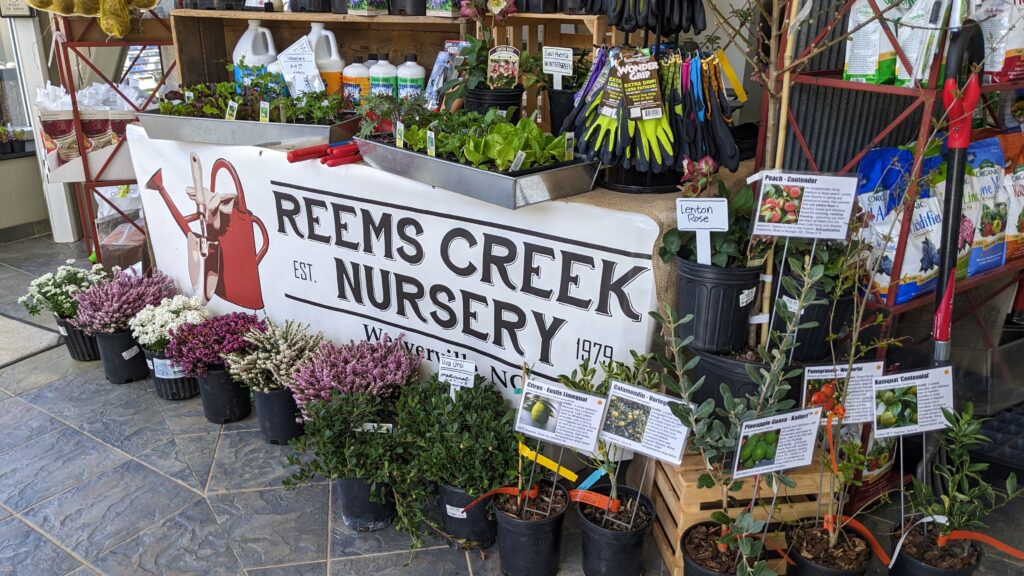
Reems Creek Nursery mini-store at Organic Growers School in Mars Hill, NC.
Organic Growers School is something we look forward to every year. It is held on the beautiful Mars Hill University campus in Mars Hill, NC – just up the road from our retail store. We set up a mini-store, chat with attendees, and check out the classes on offer. This year I (Joy) attended 3 interesting classes and wanted to briefly share my experience.
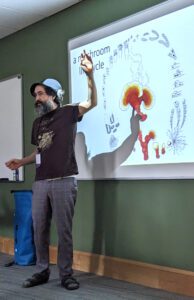
Willoughby Arevalo
DIY Mushroom Cultivation by Willoughby Arevalo – Willoughby Arevalo is an artist and professional mushroom cultivator, with years of commercial mushroom growing experience and author of a text on how to grow your own at home without the need of expensive and fancy equipment. He lives in a small urban space and forced with those space constraints, has developed methods using jars, home canning equipment, and the like to start from one mushroom and end up with many more mushrooms – a complex process! I think for anyone interested in this process it could be fun, but there’s definitely lots of ways that things can go awry and you can accidentally grow the wrong sort of fungal life. Admittedly I haven’t yet finished his book but it has been an enjoyable read so far, filled with beautiful art.
For those who have the space, Reems Creek carries a variety of inoculated mushroom logs which is easier than setting up a DIY tiny home lab, and a good introduction to mushroom cultivation. Personally my husband and I have loved the Shiitake logs we bought and have gotten numerous delicious mushrooms from them.
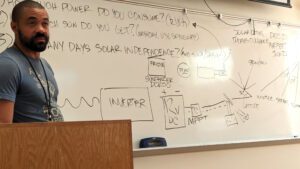
Keenan Phillips answering class questions
Off Grid DIY Solar 101 by Keenan Phillips – Keenan is a local contractor with years of experience in living with and building off-grid photovoltaic solar systems. This was an extremely informative class. I think the biggest takeaway was that there’s two basic approaches to a PV solar system – one is where you live on a very tight “electricity budget” which is relatively cheap to set up but requires being very mindful of energy usage. The other approach which is much more expensive to install, doesn’t require such mindfulness. Another serious consideration is whether to mount panels on a roof or on the ground, which involves many factors such as what might block sunlight to the panels during the entire year from either location, the condition of the roof, the angle of the roof, how difficult it is to access the roof, likelihood of branches falling on the panels, etc. Anyone even thinking about this subject needs to be comfortable with math and electricity to understand what is going on; any discussion of AC/DC has nothing to do with rock bands.
For those who enjoy thinking about complex systems or permaculture design, there’s lots of food for thought here, such as using extra electricity that is generated during the day to be sent to a hot water heater, effectively preheating it. Keenan has a fascinating system involving that extra electricity being sent to a hot water heater where it goes to radiant floor heating in winter, among other things.
At home, we have implemented certain aspects of passive solar design, which allows for less energy consumption (so less electricity to worry about producing – or buying from the grid). My favorite is growing deciduous plants (such as hardy banana, Musa basjoo) and annual vines (such as Moonflower, Ipomoea alba) on the south side of our home to help provide cooling in summer. Both of these plants and many many more that would be appropriate for such uses are available at Reems Creek Nursery.
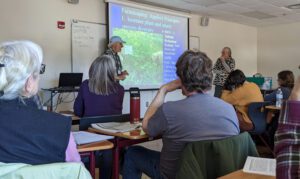
Pat Battle and Richard McDonald
The Good, the Bad, and the Bugly by Pat Battle and Richard McDonald, PhD – You might not think a class on bugs would be hilariously entertaining and informative, but that would just mean that you weren’t in a class taught by these two experienced and knowledgeable gentlemen.
The overarching principle was that you need to try to attract, whenever possible, helpful predators / beneficial insects into your garden to help manage any pest issues you may be having. In order to convince these insects to stick around, you need a variety of plants they find attractive in spring, summer, and fall + safe places to survive and raise their young.
This class was mostly designed to help answer questions of the attendees, so here’s some snippets:
- Harlequin bugs are attracted to green seed pods. You can set traps for them with tubs full of soapy water and baited with green seed pods, such as redbud pods.
- Wait to apply Bt to Broccoli heads when they are just starting to form and the plants have 8 leaves. This allows for the plants to get just a teeny tiny amount of damage that causes them to form bigger heads.
- If you are finding that you have lots of bugs (good, bad, unclear status) when you’re harvesting your vegetables, you can swish them around in an ice slurry around 34F to remove them. If there’s good bugs in the ice slurry, you can actually add them back to your garden.
- Some excellent plants to use to attract beneficial insects include (in no particular order): Cilantro, Fennel, Dill, Echinacea, Willow, Bachelor Buttons, and Sunflowers.
- To deal with squash vine borer, they recommend a combination of Bt and Safer Soap sprayed at the base of susceptible plants twice a week, starting in May.
Reems Creek Nursery carries Bt, Safer Soap, and other products for organic pest management. We also have more information about pollinators and beneficial insects in our Garden Guides under the Wildlife section.
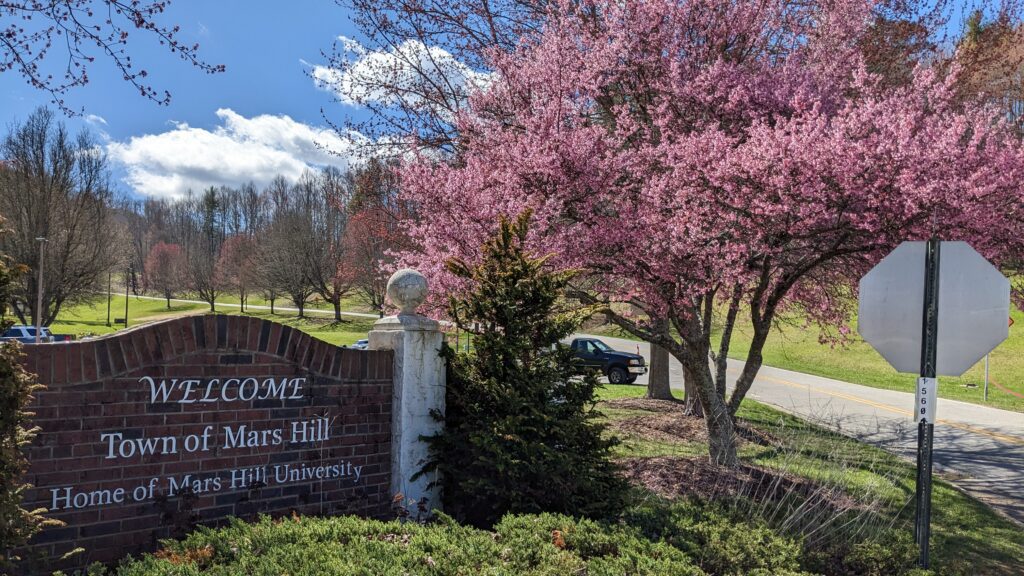
It was a beautiful though windy day.
